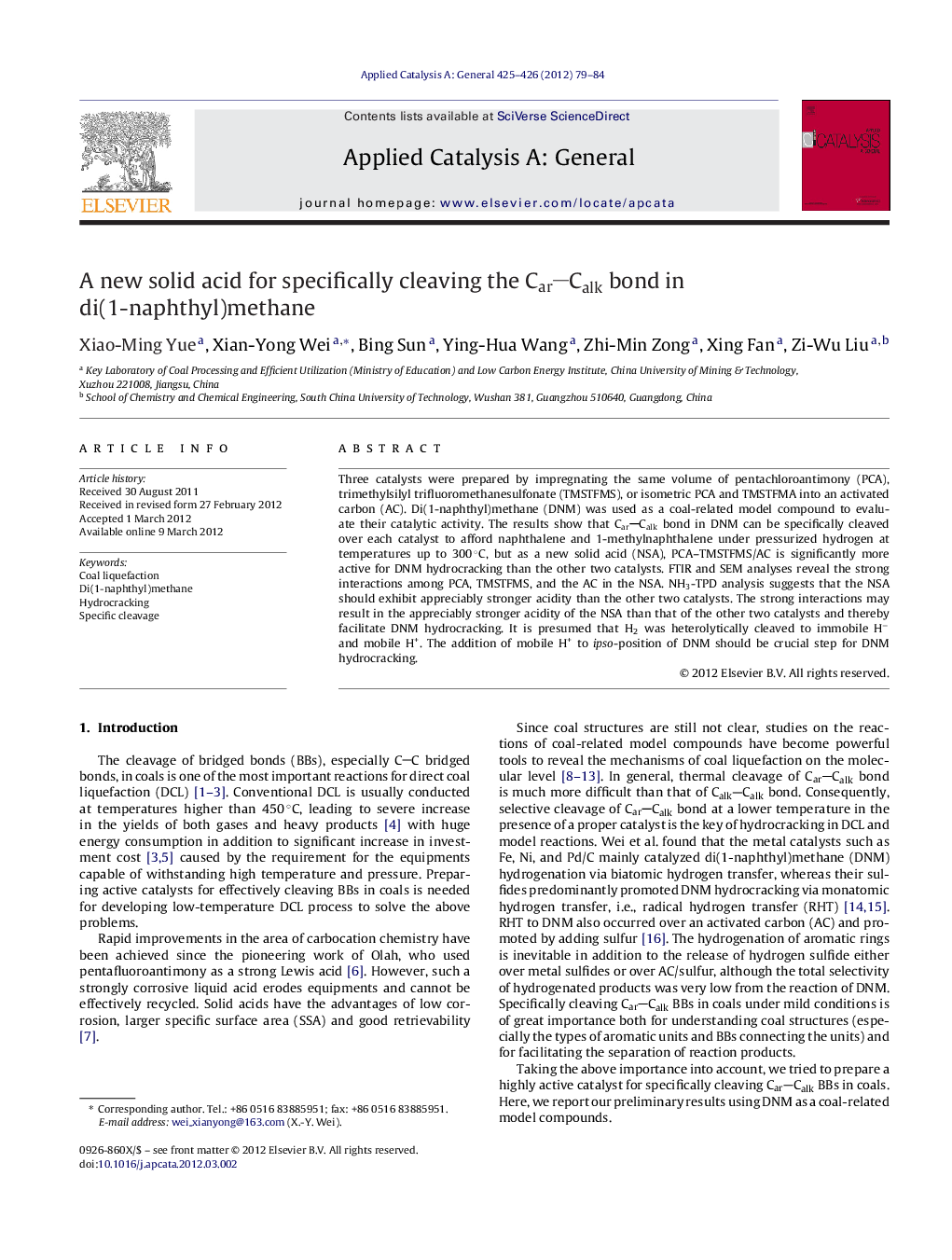| Article ID | Journal | Published Year | Pages | File Type |
|---|---|---|---|---|
| 40928 | Applied Catalysis A: General | 2012 | 6 Pages |
Three catalysts were prepared by impregnating the same volume of pentachloroantimony (PCA), trimethylsilyl trifluoromethanesulfonate (TMSTFMS), or isometric PCA and TMSTFMA into an activated carbon (AC). Di(1-naphthyl)methane (DNM) was used as a coal-related model compound to evaluate their catalytic activity. The results show that CarCalk bond in DNM can be specifically cleaved over each catalyst to afford naphthalene and 1-methylnaphthalene under pressurized hydrogen at temperatures up to 300 °C, but as a new solid acid (NSA), PCA–TMSTFMS/AC is significantly more active for DNM hydrocracking than the other two catalysts. FTIR and SEM analyses reveal the strong interactions among PCA, TMSTFMS, and the AC in the NSA. NH3-TPD analysis suggests that the NSA should exhibit appreciably stronger acidity than the other two catalysts. The strong interactions may result in the appreciably stronger acidity of the NSA than that of the other two catalysts and thereby facilitate DNM hydrocracking. It is presumed that H2 was heterolytically cleaved to immobile H− and mobile H+. The addition of mobile H+ to ipso-position of DNM should be crucial step for DNM hydrocracking.
Graphical abstractFigure optionsDownload full-size imageDownload high-quality image (93 K)Download as PowerPoint slideHighlights► A new solid acid by impregnating two active acids into activated carbon is first prepared. ► Strong interactions exist among the two acids and activated carbon. ► Di(1-naphthyl)methane is hydrocracked specifically without any hydrogenation products. ► The addition of H+ to ipso-position of di(1-naphthyl)methane could be crucial step.
